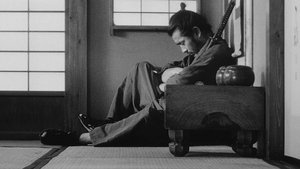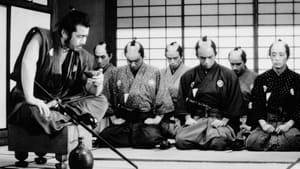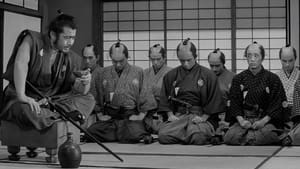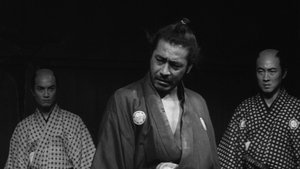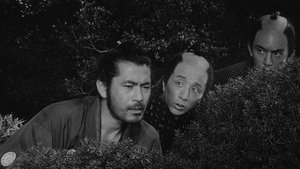Video Sources 0 Views
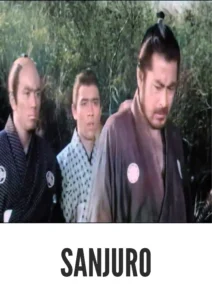
Synopsis

Step into the world of Akira Kurosawa’s Sanjuro, a captivating jidaigeki film from 1962, now beautifully colorized for a viewing experience like never before. This film, starring the legendary Toshiro Mifune, delivers a thrilling blend of action, comedy, and suspense within a story of political corruption and samurai honor. Perfect for classic film enthusiasts and those seeking a taste of Kurosawa’s genius, this HD download brings a cinematic masterpiece to your screen.
Sanjuro follows the story of nine young, idealistic samurai who believe they have uncovered corruption within their clan. They plan to expose the wrongdoings to the superintendent, but a wandering rōnin, Sanjuro (Toshiro Mifune), overhears their plans and warns them that the superintendent is the one behind the corruption.
Ignoring the advice of their chamberlain to drop the matter, the young samurai seek help from the superintendent, only to realize Sanjuro was right when they are ambushed. Sanjuro, a master swordsman with a cynical outlook, reluctantly decides to help them, guiding them with his superior tactics and cunning schemes.
Their primary goal becomes rescuing the chamberlain, who has been framed and imprisoned. Along the way, they must also protect the chamberlain’s wife and daughter, who, despite the danger, maintain a sense of refined civility and offer a contrasting perspective on violence. Sanjuro even infiltrates the corrupt officials’ ranks by pretending to accept a job from Hanbei, the superintendent’s henchman, to learn the chamberlain’s location. The film culminates in a tense and swift duel, highlighting the tragic nature of violence.
The film features a talented cast of actors who bring this suspenseful story to life:
-
Toshiro Mifune as Sanjuro
-
Tatsuya Nakadai as Hanbei
-
Yûzô Kayama as Iori Izaka
-
Reiko Dan as the chamberlain’s daughter
-
Takako Irie as the chamberlain’s wife
Sanjuro falls into the genre of jidaigeki, or period drama, with elements of action, comedy, and social commentary. Its intricate plot and memorable characters make it a captivating and thought-provoking film.
Released in 1962, Sanjuro is a sequel to Kurosawa’s earlier film Yojimbo. While Sanjuro delivers action and thrills, it also presents a critique of violence and the samurai code. The film earned ¥450.1 million in distributor rentals at the Japanese box office in 1962.
This colorized version of Sanjuro has been meticulously restored using modern digital techniques, enhancing the visual appeal while preserving the film’s original atmosphere. The colorization process involved carefully analyzing the grayscale tones of the original black and white footage and assigning appropriate colors to each scene. This painstaking process brings new life to the characters and settings, making the story even more engaging for modern audiences. While some may debate the merits of colorizing classic films, it introduces these films to a broader audience, ensuring their legacy for future generations.
-
: Akira Kurosawa
-
: Akira Kurosawa, Ryûzô Kikushima
-
: Fukuo Kuratomi
-
: Akira Kurosawa
-
: Toho
-
: Toho
-
: 96 minutes
-
: MP4
-
: HD (1080p)
-
: Compatible with most devices, including smartphones, tablets, computers, and smart TVs.
Sanjuro (1962) is highly regarded, praised for its direction, acting, and action sequences.
-
: What is Sanjuro about?
-
A: Sanjuro is about a wandering samurai who helps a group of young samurai expose corruption within their clan.
-
-
: Is Sanjuro (1962) a well-known Kurosawa film?
-
A: Yes, Sanjuro is a highly regarded film in Kurosawa’s filmography and a sequel to Yojimbo.
-
-
: Is this version of Sanjuro colorized?
-
A: Yes, this version has been professionally colorized to enhance the viewing experience.
-
-
: What makes Sanjuro interesting for Kurosawa fans?
-
A: Sanjuro showcases Kurosawa’s directorial skills, Mifune’s iconic performance, and the film’s blend of action, comedy, and social commentary.
-
-
: What is the download format?
-
A: The download format is MP4, which is compatible with most devices.
-
-
: What resolution is the download?
-
A: The resolution is HD (1080p), providing a high-quality viewing experience.
-
Watch Sanjuro Today!

